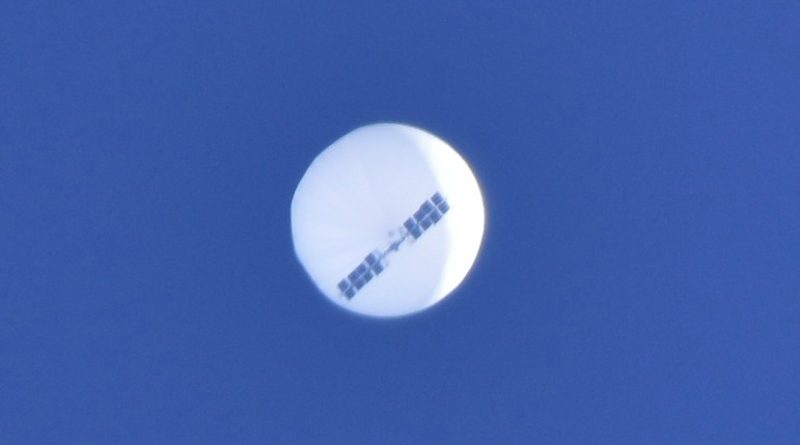How Biden can get ahead of the balloons
By Tara Sonenshine, Professor of Practice of Public Diplomacy at the Fletcher School of Law and Diplomacy at Tufts University
America must do a better job of patrolling its skies. That is one takeaway from the Chinese balloon affair.
Mysterious objects in the sky can terrify citizens, and we have seen a string of unidentified flying objects in American airspace over the past few days, although we are now being assured that China is responsible for only one balloon, and the jury is out on whether its appearance over our skies was intentional or the product of strong winds.
To avoid spreading disinformation, conspiracy theories and fear, the United States government must share as much information as possible without compromising national security.
One thing President Biden could say is that the U.S. government has been ahead of this story. Take, for example, the Tiger Team, which we first learned about last September when it was formed by the Pentagon to counter Chinese influence by examining how best to speed up arms sales to friendly countries.
Now that same task force will try to come up with ideas to address floating garbage in the air — which could explain the balloons that were found roaming the skies after the U.S. downed the Chinese surveillance balloon. That is likely what the administration told members of Congress in an unclassified briefing.
The assumption seems to be that the follow-up incidents may have involved weather drones or commercial vehicles. But that begs the question: What policy is needed to differentiate spy craft from junk so that pilots know the exact protocol before acting, including identifying so-called targets of interest (TOI), authentication, commands to engage aerial items and the damage assessment after the fact?
It is not a new problem. In 2021, the Department of Defense established the Airborne Object Identification and Management Synchronization Group (AOIMSG.) If you think that is a mouthful, consider that the AOIMSG was the successor to the U.S. Navy’s Unidentified Aerial Phenomena Task Force. Both efforts were designed to address incursions by airborne objects into U.S. airspace, posing safety concerns for commercial aircraft and national security.
There is nothing new under the sun. In many ways, the floating airspace problem is akin to the floating garbage problem in the ocean, only with differences in the use of surveillance, which is hard to do in the ocean unless you have a submarine.
What makes all this deadly serious, of course, is the involvement of China. We know that China has a high-altitude sophisticated balloon program for collecting intelligence. And we know that Chinese surveillance balloons are used in dozens of countries, including Taiwan, which remains a dangerous conflict in the making. Taiwan’s Defense Ministry has reiterated in the last few days that it would shoot down any suspected military object coming close to its shores from mainland China.
The Biden administration’s best defense is to be on offense, not only militarily but in terms of public diplomacy. There are many good stories to tell about U.S. preparedness when it comes to China and Taiwan. It would be a mistake to wait too long to set the table, publicly, about the dangers of conflict between the two. Our allies in the region are getting nervous and need to assure their populations that America is on top of this.
This China balloon story is not going away. There will be dribs and drabs of information, leaks and public disclosures about the recovery effort. Being reactive is never a great strategy in an age of social media, citizen journalism and narratives being pushed from all over the world to shape public perception.
My advice: Get ahead of the balloons.
This piece is republished from The Hill.

